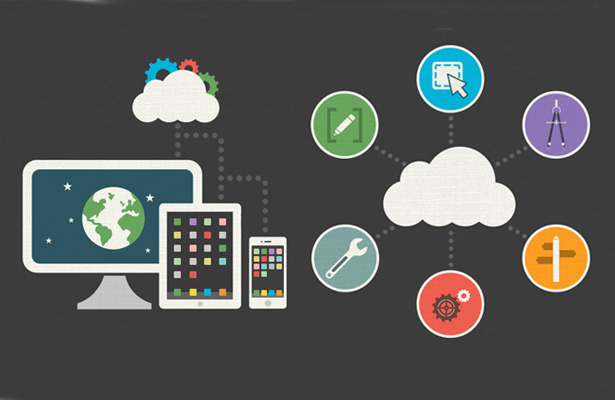Category: Mobile
-
Android AVM machine adb commond commands
Source adb help // List all comands == Adb Server adb kill-server adb start-server == Adb Reboot adb reboot adb reboot recovery adb reboot-bootloader adb root //restarts adb with root permissions == Shell adb shell // Open or run…
-
Smartphone compasiron platforms
Comparison Chinaprice Kimovil Smartphone cameras compare Kimovil DxoMark
-

App Development
Tutorial Download a tutorial that summerizes youtube videos from App master. Download app-developments summary Google drive link to Docx file Keywords App Master, AppMaster, Freelancer.com, Freelancer, Fiverr, Daniel Zonenfeld, דניאל זוננפלד, פיתוח אפליקציות
-

Top 5 Best Cross-Platform Mobile Development Tools
Information based on AppIndex.com and Wikipedia: With a C# shared codebase, developers can use Xamarin tools to write native iOS, Android, and Windows apps with native user interfaces and share code across multiple platforms.[4] Xamarin has over 1 million developers in more than 120 countries around the world as of May 2015.[5] http://xamarin.com/ In software…
-
Build Android App with PhoneGap
Build Android App with PhoneGap 01 – Install JDK http://www.oracle.com/technetwork/java/javase/downloads/jdk8-downloads-2133151.html 02 – Install Android Studio http://developer.android.com/sdk/index.html#top 03 – Install Node.JS http://nodejs.org/download/ 04 – Install PhoneGap Open command prompt and write there: C:> npm install -g phonegap 05 – Install Cordova C:>npm install -g cordova 06 – Create new phonegap project : Open command prompt and…
-
JQuery Mobile – Lesson 05 – Navbar – Buttons and more
JQuery Mobile – Lesson 05 – Navbar – Buttons and more Lesson 01 | Lesson 02 | Lesson 03 | Lesson 04 | Lesson 05 1. At this lesson we will continue from Lesson 03. 2. Here is the HTML Code from Lesson 03 with changes marked with RED color: A navbar will appear with two…
-
JQuery Mobile – Lesson 04 – Themes
JQuery Mobile – Lesson 04 – Themes Lesson 01 | Lesson 02 | Lesson 03 | Lesson 04 | Lesson 05 1. Here We will learn about JQuery Mobile Themes. 2. Browse to http://themeroller.jquerymobile.com/ 3. Select a Theme or click on Add Swatch to create new theme, looks at the rights side of the following picture:…
-
JQuery Mobile – Lesson 03 – Transitions
JQuery Mobile – Lesson 03 – Transitions Lesson 01 | Lesson 02 | Lesson 03 | Lesson 04 | Lesson 05 1. In continuation to Lesson 02, here you will see a demo of transitions. 2. We will use the last HTML file that has been created at the last lesson with addition of the…
-
JQuery Mobile – Lesson 02 – Switching between pages
JQuery Mobile – Lesson 02 – Switching between pages Lesson 01 | Lesson 02 | Lesson 03 | Lesson 04 | Lesson 05 1. In continuation to Lesson 01, We will learn how to switch between div pages. 2. Let’s give each page an different ID: <!DOCTYPE html> <html> <head> <meta charset=”utf-8″ /> <title>Page title</title>…
-
JQuery Mobile – Lesson 01 – Basic page Template
JQuery Mobile – Lesson 01 – Basic page Template Lesson 01 | Lesson 02 | Lesson 03 | Lesson 04 | Lesson 05 1. <Optional> Download JQuery Mobile from http://jquerymobile.com/download/. 2. Or just the use the following code between <head> tags of HTML document: <link rel=”stylesheet” href=”http://code.jquery.com/mobile/1.4.5/jquery.mobile-1.4.5.min.css” /> <script src=”http://code.jquery.com/jquery-1.11.1.min.js”></script> <script src=”http://code.jquery.com/mobile/1.4.5/jquery.mobile-1.4.5.min.js”></script> 3. Use the following HTML5…
-

Mobile development resources
Native Android 01 – 77 videos (Dec/2014) https://www.thenewboston.com/videos.php?cat=278 02 – 200 videos (Aug/2011) https://www.thenewboston.com/videos.php?cat=6 03 – 25 videos Android Development for Beginners 04 – 42 videos Android Development Tutorial 05 – 29 videos How to Make Android Apps Apple 01 – https://www.thenewboston.com/videos.php?cat=28 Multi Platform 01 – MS Visual Studio – Apache Cordova Template 02 – PhoneGap 03 – Intel…
-

THE FIVE BEST WAYS TO DEVELOP ENTERPRISE MOBILE APPS
THE FIVE BEST WAYS TO DEVELOP ENTERPRISE MOBILE APPS With the advancement of technology, the way to build enterprise apps and mobile apps is changing. There is no right or wrong way to develop mobile apps, and the way you choose to develop your app will depend on your needs, like how many backend systems…